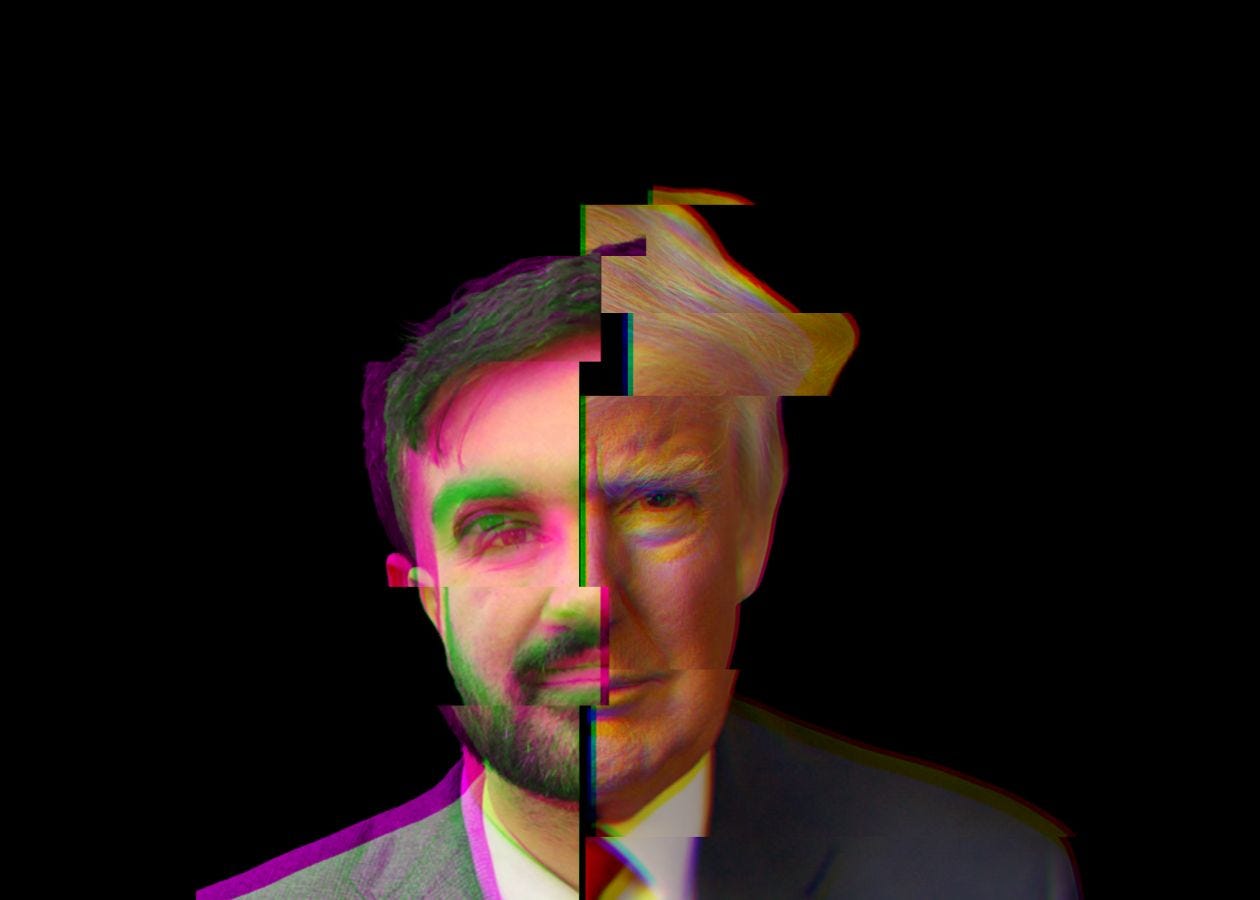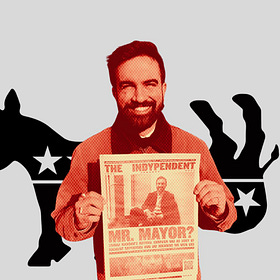If It’s Far Right vs. Far Left, the Far Right Wins
If people feel they’re being forced to choose between two extremes, the majority will always tack right.
Earlier in the week, I threw this quick observation up on Substack Notes:
Lost elections are rigged, won elections are fair. Good job numbers are real, bad ones are fake. Sex trafficking is bad, unless the traffickers will blame your enemies. Crime is bad, unless the criminals are pro-Trump. This isn’t 4D chess, or even tic-tac-toe, just Autocracy 101.
There were a lot of replies. But one comment from a reader named Edward stuck out to me:
I agree and we were getting the same bullshit from Dems. Yes I am doing whataboutism! DEI is autocracy. MAGA and the Woke are bad.
This is indeed whataboutism, so some credit for your candor.
I won’t argue with the notion that far-right and far-left—far-anything—is bad. However, there are a few fundamental points that a simplistic comment like this misses.
The first is that people are often willing to overlook the most extreme expressions of their own side.
The mainstream left downplays the problems of the radical left. Look how quickly many Democrats rallied around Zohran Mamdani without scrutinizing his support for “seizing the means of production” and “defund the police” or holding him accountable for his dodging on “globalize the intifada.” This wasn’t just a mechanical endorsement because he’s the party’s nominee. In many cases, we’ve seen a bear-hug embrace from prominent Democrats.
On the mainstream right, you have people who privately recognize that the far-right is dangerous, but enable or support it anyway. Some, like our friend Edward, will even publicly concede the point: MAGA is bad, but “MAGA and Woke are [both] bad,” therefore, MAGA is acceptable.
Where is the danger?
The false equivalence between far-right and far-left is practical, not philosophical—again, in theory, both extremes are bad.
Today, the most immediate danger in America and much of the democratic world comes from the far-right. That’s not because the idea of fascism is worse than the idea of communism (reds have killed more people, anyway), but because the far-right holds the levers of power in Washington and is rising across Europe and even in Japan.
More to the point, if people feel they are being forced to choose between one extreme or another, they will swing right. The Nazis never had a majority in the Reichstag, but they were always well ahead of Ernst Thalmann’s communists. Nearly a century later, the Nazis’ successors in the AfD still outpace the Left Party. In France’s 2017 presidential election, leftist Jean Luc-Melenchon finished fourth in the first round of voting. In 2022, he finished in third. He never qualified for the second round. Far-right candidate Marine Le Pen did, both times.
Why the far-right beats the far-left
The far-right positions itself as trying to preserve or restore something, whether some racial-demographic balance or the nation’s bygone glory days. The far-left, by contrast, is seen as trying to disrupt, overthrow—a total departure from tradition.
Understood through this lens, we can see why people, against their better judgement, treat MAGA as a safe bet. The writing has been on the wall for years. In 2019, nearly half of all Americans said that the Democratic Party was moving too far to the left, while only 37% felt the Republicans had moved too far to the right (and Trump was two years into his first term at this point!).
I don’t point any of this out because I like the way things are going, but because it is simply a fact: far-left excess enables far-right overreach.
Democrats gain nothing of strategic value by indulging this wing of the party. Bernie Sanders was never able to secure a presidential nomination among Democrats; to insist he could have won a general election is to deny reality. Alexandria Ocasio-Cortez is the lone representative of the DSA-aligned left among top contenders for the 2028 Democratic primary, and she is polling in the middle of the pack below several more moderate alternatives. If Democrats really want to put up a serious fight against Trump’s demagoguery, then they should stop indulging radicals and remember that the far-left is more loud than it is popular.
P.S. Whether you agree or disagree, let’s continue the discussion—in the comments, and on a Zoom call. Yes, Zoom! I’ve recently announced new Zoom calls for paid subscribers so that we can have a real conversation. Check it out and please consider joining.
More from The Next Move:
Zohran Mamdani is the Democratic Establishment’s Fault
This is what happens when the normalcy candidate isn’t normal.






I’m still trying to figure out what’s wrong with diversity (a demographic fact), equity (synonymous with fairness), and inclusion (vs exclusion). Maybe if I figure it out, I’ll then know what “woke” is. And then I’ll understand how “the left” is forcing “the right” into fascism. All I see right now is a bunch of people on the right whose feelings are hurt by distinctly American values, but perhaps when I understand “woke,” this misconception will be cleared up.
Kasparov is correct. There is something about simplistic narratives of past glory and the traditions of “us real people,” versus “those others,” that will always have more crowd appeal to the politically disengaged than materialistic explanations of why they themselves are on the outs. On the one hand, people see a kind of vaguely religious and symbolically driven call to vigilance and protection of familiar ways. On the other, people see privileged intellectuals who seem to be talking down to them, pointing to material benefits that, in the view of the audience, may never come to pass. Extremist narratives of the former type attract more people than those of the latter. It was true in the days of Weimar Germany and is true today. In the U.S., the hard left doesn’t hold that much sway in the Democratic Party and never has. The rescue from our current condition — a reinvigoration of the American dream for all — will come from the political mainstream not the fringes.